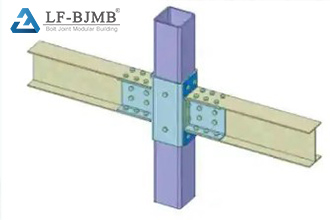A unidirectional force transfer system in structural steel design refers to a design in which forces are transferred in a single direction in the structural system. This design allows the structure to carry heavy loads in one direction, while it can be designed to be more flexible and lightweight in other directions. Unidirectional force transfer systems are commonly used in structures such as bridges, high-rise buildings, warehouses, industrial plants, etc., especially if they are required to support long spans or to withstand unidirectional forces such as gravity or wind.
In structural steel design, a unidirectional force transfer system usually involves the following key components and concepts:

- Primary and Secondary Beams: Primary beams are responsible for transmitting loads in one primary direction, while secondary beams support load transfer in a secondary direction. This layout allows the primary beam to focus on carrying critical loads while the secondary beams handle localized loads.
- Bracing systems: Bracing systems (e.g. diagonal bracing, trusses, etc.) enhance the stability and load-carrying capacity of the structure, and are critical to the lateral stability of the structure, especially in the case of unidirectional force transfer.
- Nodal design: The design of nodes (i.e., beam-to-column and beam-to-beam joints) is particularly critical in unidirectional force transfer systems because they are required to transmit forces in a particular direction, while they may be required to allow for some degree of movement or rotation in other directions.
- Material Optimization: By optimizing the use of steel, e.g., by selecting appropriate sizes of sections, plates, etc., material and cost savings can be achieved while ensuring structural safety.
Other factors such as ease of construction, durability, maintenance requirements, and possible future modifications need to be taken into account in the design. The design and implementation of a one-way force transfer system needs to be carried out by relevant engineering standards and codes to ensure structural safety and reliability.











 About Us
About Us 2024-04-26
2024-04-26


